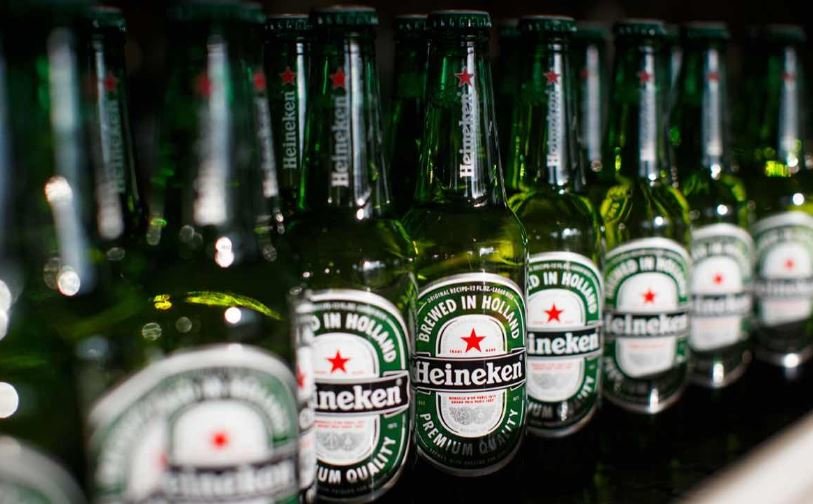Dutch courage
22-year-old Gerard Heineken had to approach the Dutch courts to be proclaimed an emancipated minor in order to use his inheritance to buy his first brewery. He knew nothing about brewing but he was ambitious and had a knack for hiring the right people. Here’s the man behind the first Heineken.


The figures are staggering: it’s a brew sold in 192 countries worldwide with something like 25 million pints sold daily! The company’s revenue for the first quarter of 2022 rose 35% to an astonishing $7.4 billion (R117 billion), Just Drinks reported. It’s easy to see how it was able to make a bid to buy South African liquor giant Distell for R38,4 billion, a move approved by shareholders and which should be finalised shortly.
The year was 1864 and in America, the north and south were battling each other in the Civil War but Gerard Adriaan Heineken realised what a bargain the neglected Amsterdam brewery De Hooiberg was – and what opportunity it presented. As Marcel Molenaar wrote: “Until that moment he was running the family business of trading in cheese and butter. But though he had no idea of beer, he did recognise the potential of the beverage. First he saw that the government favoured the sales of beer much more than strong liquor. It was considered ‘a healthy men’s drink’ and those in the business could count on fiscal support by that same government. Secondly he realized that the quality of beer was below average and with the right technological advancements he could make his brew stand out from the rest. The steam machine, that helped supply unlimited amounts of boiled water, the recently invented thermometer and glucose meter all helped to improve the quality of English beer, so why not apply those techniques in Amsterdam?”
Quality was non-negotiable and Heineken smartly invested in people. He appointed a young, somewhat prickly and difficult to work with brewmaster, 22-year-old Wilhelm Feltmann who already had extensive experience having worked in Frankfurt and Utrecht. Relationships with his workers and clients were key to growing the business. He insisted on the best possible ingredients, personally visited each of the bars and restaurants he supplied and if they weren’t happy with the beer, offered them a money back guarantee. He even advised his customers not to order too much at one time but took it on himself to supply them more frequently – and his horse-drawn carts were a common sight in central Amsterdam. Since his beer was already better than his competitors, his money stayed in his pocket!

There are more beverages that just the original in the Heineken stable nowadays
In 10 years his business had grown to the point where it necessitated another brewing facility – so Heineken expanded to Rotterdam. And while the use of steam technology and modern equipment was part of his success, so was Heineken’s adoption of new-fangled ammoniac-based cooling. It meant his company was no longer dependent on expensive ice supplies shipped in from Norway. He saved vast sums of money – which he ploughed straight back into the business, expanding the brewery’s footprint evermore.
The next big step in the evolution was the appointment of a young chemist, Hartog Elion, who had studied under Louis Pasteur. Beavering away in his laboratory, in 1886 Elion isolated and cultured what became Heineken beer’s secret weapon, the unique and protected A-yeast that is still used to this day to ferment their brews.
Heineken died young at the age of 51 in 1893, but his son and grandson built on his success. America proved to be a major part of their growth in the early part of the 20th century. After the lifting of Prohibition in the United States, Heineken’s first shipment of beer landed in Hoboken in New Jersey. Boosted by the thirst for this product as well as clever advertising, a fledgling industry in the USA, within four years from 1935 sales were up 600%!

It likens its five steps to the five points of the bold red star on its distinctive green branding: the use of A-yeast, only quality malt, 100% natural ingredients, horizontal brewing tanks and its meticulous, trained brewmasters.
Strategic partnerships and takeovers have been part of the company’s playbook as much as its unwavering commitment to quality. It likens its five steps to the five points of the bold red star on its distinctive green branding: the use of A-yeast, only quality malt, 100% natural ingredients, horizontal brewing tanks and its meticulous, trained brewmasters. Heineken is now the second largest brewer in the world, having bought out Amstel, Tiger in Asia, Sol in Mexico and Birra Moretti in Italy, amongst others.
Last year, Heineken brewed 231.2 million hectolitres of beer and current CEO, Dolf van den Brink, reported that volumes in the first quarter of 2022 had risen by 5.7%. Only AB InBev brews more at 581 million hectolitres a year – and it famously bought out SA Breweries for $122 billion (R1 939 billion) five years ago. Heineken has come a long way in 158 years.